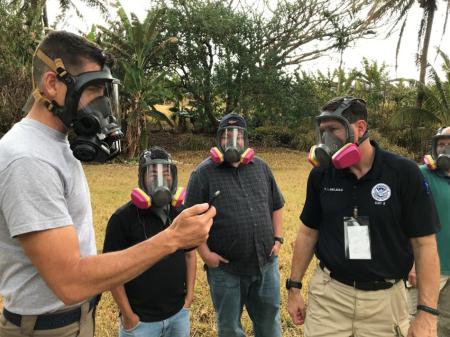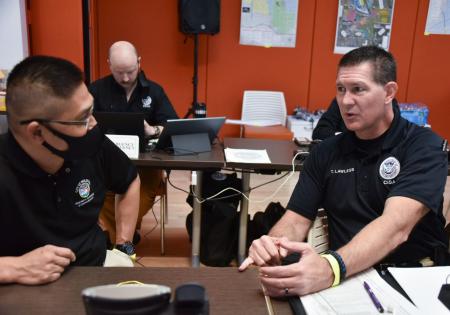April is Emergency Communications Month! Meet Region 9 Emergency Communications Coordinator Tom Lawless
What is your job title?
Emergency Communications Coordinator for Region 9
What is your professional background?
I have a bachelor’s degree in criminal justice from San Diego State University and a master’s degree in technology management from National University. I started as a GS-1 for the U.S. Navy in San Diego in 1984 at the age of 16. I was always on the leading edge of technologies (PCs, networks, email, firewalls, routers, switches, and so on). Others saw each technology as a fad and weren’t interested in working with the technology. But, I embraced it. While being a technical person, I always had a desire to be a part of public safety. In 1997 I joined the San Diego County Sheriff’s Department Search and Rescue (SAR) team as an Emergency Medical Technician (EMT). By the time I retired as a reserve lieutenant in 2017, I had worked in SAR, patrol, hostage negotiation, and SWAT.
When did you start working for CISA?
I was working for the U.S. Navy as a civilian when I took a detail to the Department of Homeland Security’s Office of Emergency Communications (OEC) in 2007. OEC hired me permanently in 2010. OEC would later become what is now known as CISA’s Emergency Communications Division.
What do you do for CISA?
I function as a subject matter expert to the public safety community in addressing complex emergency communications issues. I establish trusted relationships, enhance collaboration, and promote the sharing of best practices and information between all levels of government. These partnerships and efforts improve the nation’s operable and interoperable emergency communications efforts. I travel often throughout Region 9 and across the nation, attending and supporting governance, planning, and training efforts. Additionally, I respond to real world events upon State or Federal request as part of our ESF-2 mission.
What do you like most about your job?
I find it very rewarding to see the immediate-, near-, and long-term enhancements to the nation’s emergency communications capabilities and resiliency that we contribute to.
What is your most exciting moment while working in emergency communications?
In Fall 2018, Typhoon Yutu was forming east of Guam and the Commonwealth of the Northern Marianas Islands (CNMI). Because places like American Samoa and CNMI get hit hard by such storms, it takes weeks to re-establish airport operations. FEMA typically sends a small team in advance of the event to coordinate recovery operations. I was part of this team and rode out a 232-mph storm! The devastation was heartbreaking. We worked for weeks restoring public safety communications, as well as cellular systems. The biggest challenge was the lack of power. All of the utility poles on the islands were blown away. I got to work with and support a wide range of teams, from medical teams to the U.S. Navy Seabees. This kind of teamwork and being able to immediately make a difference in the community is why I love what I do.
###

In the aftermath of the Kilauea volcanic eruption in Hawaii, CISA Region 9 Emergency Communications Coordinator Tom Lawless (right) worked with federal partners, including the U.S. Environmental Protection Agency (EPA), to create a satellite-based communications solution that would allow EPA air quality sensors to upload data on sulfur dioxide levels to command posts.

In support of last year’s Super Bowl LVI game, CISA Region 9 Emergency Communications Coordinator Tom Lawless coordinated with local, state and federal agencies to ensure the use of interoperable radio equipment, developed local and federal communications plans, and made cache/loaner radios available to visiting state and federal agencies.




